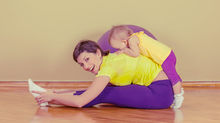Yoga and Rolfing Structural Integration, part 1
- Tylan Hadlock
- Jul 24, 2017
- 2 min read
Most people who practice yoga have experienced some poses that feel comfortable or easy for them. But everyone who practices yoga has found a pose (or many) that just doesn't feel right for their body; or that doesn't seem to progress no matter how long they have worked at it.

When this happens, it probably isn't because you aren't trying hard enough. The likely cause is that the fascia in your body has gotten too tight, too short, too dry, or too sticky to let you move how you want to.
The fascia is the part of your muscle that isn't muscle. Put another way, your muscles are comprised of both muscle fibers and fascia. That fascia raps around each muscle fiber, then around bundles of muscle fibers, then around groups of bundles to create the whole muscle. When the fascia then reaches out and attaches the muscle to the bone, we call it a tendon. But it doesn't stop there. The same fascial tissue then envelopes the bone and continues on to rap around the next muscle, creating an endless web, or network, that connects and supports the entire body.
Injury, trauma, or movement patterns through life can cause the fascial network in the body to lose its adaptability, either in specific areas or overall. Yoga is a great way to revitalize the body, but sometimes it needs some outside help. If the fascia in your hamstrings is full of adhesions, then you can spend countless hours stretching them and only get minor results. But with Rolfing Structural Integration, you can release the adhesions and experience a much fuller stretch and freedom of movement. Receiving a series of Rolfing SI sessions for your entire body will supercharge your yoga and allow you to achieve greater results in both body and mind!











Comments